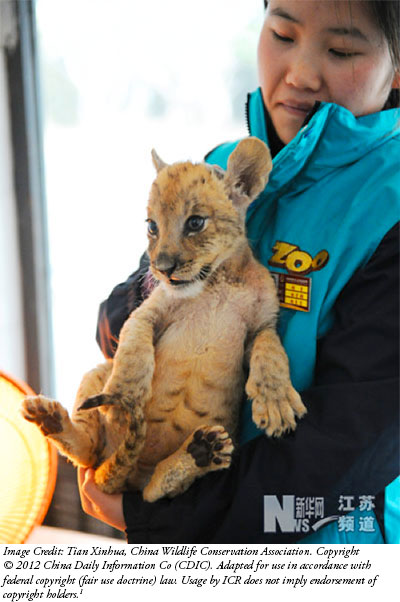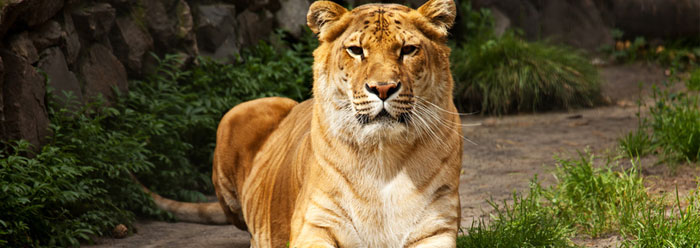 Tigons
and ligers, as well as all cat varieties, are most easily
explained in the Bible’s historical context.
Tigons
and ligers, as well as all cat varieties, are most easily
explained in the Bible’s historical context.
In short, lions and tigers can interbreed because they both descended from an ancestral cat family. Scientists place different cats on a continuum of interbreeding varieties. For example, house cats can interbreed with small feral and other wild cats. They descended from the African wild cat.3 Small wild cats have, in turn, interbred with larger wild cats. Leopards and panthers can interbreed. All of this breeding potential clearly shows that different cats are varieties within the same basic cat kind.
This is exactly what one would expect from the early Genesis record. Creatures were designed to reproduce "after their kind." Creatures were also designed to "multiply and fill" ever-changing environments. In the process of filling the post-Flood world, the cats on board the Ark rapidly diversified into the varieties known today, as well as extinct varieties like the saber-toothed cat.
And this all happened recently. If evolutionary time were true, then many more cat varieties probably would have lost the ability to interbreed after so many years in reproductive isolation. Instead, because the cats have only been isolated from one another for thousands and not millions of years, some cat varieties retain potential to interbreed when brought near to one another.
After reviewing cat hybridizations, fossil cat skeletons, molecular sequence data, fur color patterns, and cat-specific viruses, one recent article concluded, "It is reasonable to assume that all felids [cat] arose from a single founder species and that they have passed through one or more adaptive radiations, exploiting their inherent morphogenetic potential to produce all of the known extant and extinct species of cat."4
Just as in dogs and in people, there is a tremendous potential for trait variation among cats. And just like dogs and people, cats have always been cats—whether they are ligers, tigons, or tabbies.
References
- Tigon debuts in E China wildlife park. China Daily. Posted on chinadaily.com.cn February 29, 2012, accessed August 6, 2012.
- Meliker, S. Lioness in china Gives Birth to Rare Tigon Cubs. VetStreet. Posted on vetstreet.com March 1, 2012, accessed August 6, 2012.
- The African wild cat is scientifically named Felis lybica. Its ancestral relationship to modern domestic cats is inferred from DNA sequence similarity studies, for example, Driscoll, C.A. et al. 2007. The Near Eastern Origin of Cat Domestication. Science. 317 (5837): 519-523.
- Pendragon, B. and N. Winkler. The family of cats—delineation of the feline basic type. Journal of Creation. 25 (2): 118-123.
* Mr. Thomas is Science Writer at the Institute for Creation Research.
